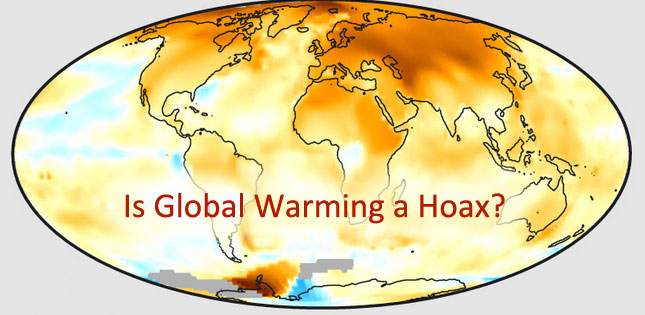Global warming, a term that evokes a plethora of emotions and opinions, has been at the center of heated debates for decades. With an increasing amount of misinformation circulating, it’s crucial to sift through the noise and illuminate the facts surrounding climate change. This article aims to debunk common misconceptions about global warming, revealing the scientific consensus as well as the implications of ignoring this pressing issue.
Understanding what global warming is, as well as what it is not, is integral in grasping the broader concept of climate change. Defined broadly, global warming refers to the long-term rise in Earth’s average surface temperature due to human activities, primarily the emission of greenhouse gases like carbon dioxide (CO2) and methane (CH4). This warming trend is evidenced overwhelmingly by data collected from multiple sources over the years.
However, certain myths persist, creating doubt and skepticism around this critical subject. Let’s explore and debunk these pervasive misconceptions.
Myth: Climate Change Is a Natural Cycle
One of the most entrenched fallacies is the assertion that climate change is merely a natural cycle that Earth experiences over time. While it is true that the planet has undergone various climatic shifts throughout its geological history, the current episode of warming is occurring at an unprecedented rate and correlates strongly with human activities. Before the industrial revolution, the Earth’s natural climate processes operated over millennia. The rapid increase in temperature over the past century cannot be attributed solely to natural phenomena.
Scientific studies indicate that current atmospheric CO2 levels are higher than they have been for at least 800,000 years. This accumulation is not just a fluctuation; it aligns closely with industrialization and the extensive burning of fossil fuels. By recognizing the distinction between natural climate variations and the anthropogenic influences driving today’s climate crisis, we can understand the urgency of the situation.
Myth: There Is No Consensus Among Scientists
Another prevalent myth claims that scientists are divided on the issue of climate change, suggesting its validity is debatable. In reality, an overwhelming majority of climate scientists agree that global warming is happening and that human activity is a primary contributor. Numerous studies highlight this consensus, with organizations such as the Intergovernmental Panel on Climate Change (IPCC) producing extensive reports that synthesize global research findings.
Polls show that approximately 97% of scientists specializing in climate-related fields endorse the idea that human actions are accelerating climate change. This unity amongst scientists points not only to the validity of climate studies but also serves as a clarion call for collective action.
Myth: Extreme Weather Is Just Weather
A common misperception is that individual weather events—extreme storms, unprecedented heat waves, and severe droughts—cannot be linked definitively to climate change. However, climate change does not manifest uniformly; it amplifies existing weather patterns and makes extreme weather events more severe, frequent, and unpredictable. For example, warmer temperatures can lead to increased evaporation, resulting in more intense storms and heavier precipitation in some areas, while simultaneously causing droughts in others.
Moreover, the connection between climate change and natural disasters is increasingly evidenced by various studies. As the global thermometer rises, so does the energy in the atmosphere. The perturbations in weather patterns are well-documented, painting a clear picture of how climate change is intricately woven into these phenomena.
The Long-Term Implications of Ignoring Climate Change
In addition to debunking myths, it is critical to understand what ignoring climate change entails. The ramifications of inaction are profound, impacting both future generations and current ecosystems. Sea level rise, species extinction, and widespread agricultural disruptions are just a few of the looming threats posed by climate change.
Moreover, the economic costs of climate inaction are substantial. The financial implications of disaster recovery, infrastructure rebuilding, and health care burdens related to pollution and climate-induced health problems will be felt by taxpayers and governments alike. Investing in sustainable practices now can mitigate these future costs and foster a more resilient economy.
Taking Action: The Path Forward
Awareness of the scientific consensus and the debunking of myths surrounding climate change is not enough; proactive steps are essential. Individuals, corporations, and governments must prioritize sustainability in their operations and decision-making processes. This can include supporting renewable energy initiatives, enhancing energy efficiency, and reducing carbon footprints through informed lifestyle choices.
Education plays a crucial role in this battle. By fostering understanding and promoting honest dialogues about climate science, society can cultivate an engaged citizenry equipped to advocate for tangible climate action.
Conclusion: Seek the Truth
Global warming is not a myth. It is a reality supported by scientific evidence that requires immediate attention. By demystifying misconceptions and understanding the pivotal role of human activity in climate change, we empower ourselves and future generations to make informed decisions that drive positive environmental transformation. In this age of information, it is imperative to seek truth through evidence and engage actively in the discourse surrounding our planet’s climate. Strong leadership and informed action are needed to confront our global challenge head-on. Only then can we pave the way to a sustainable future.







